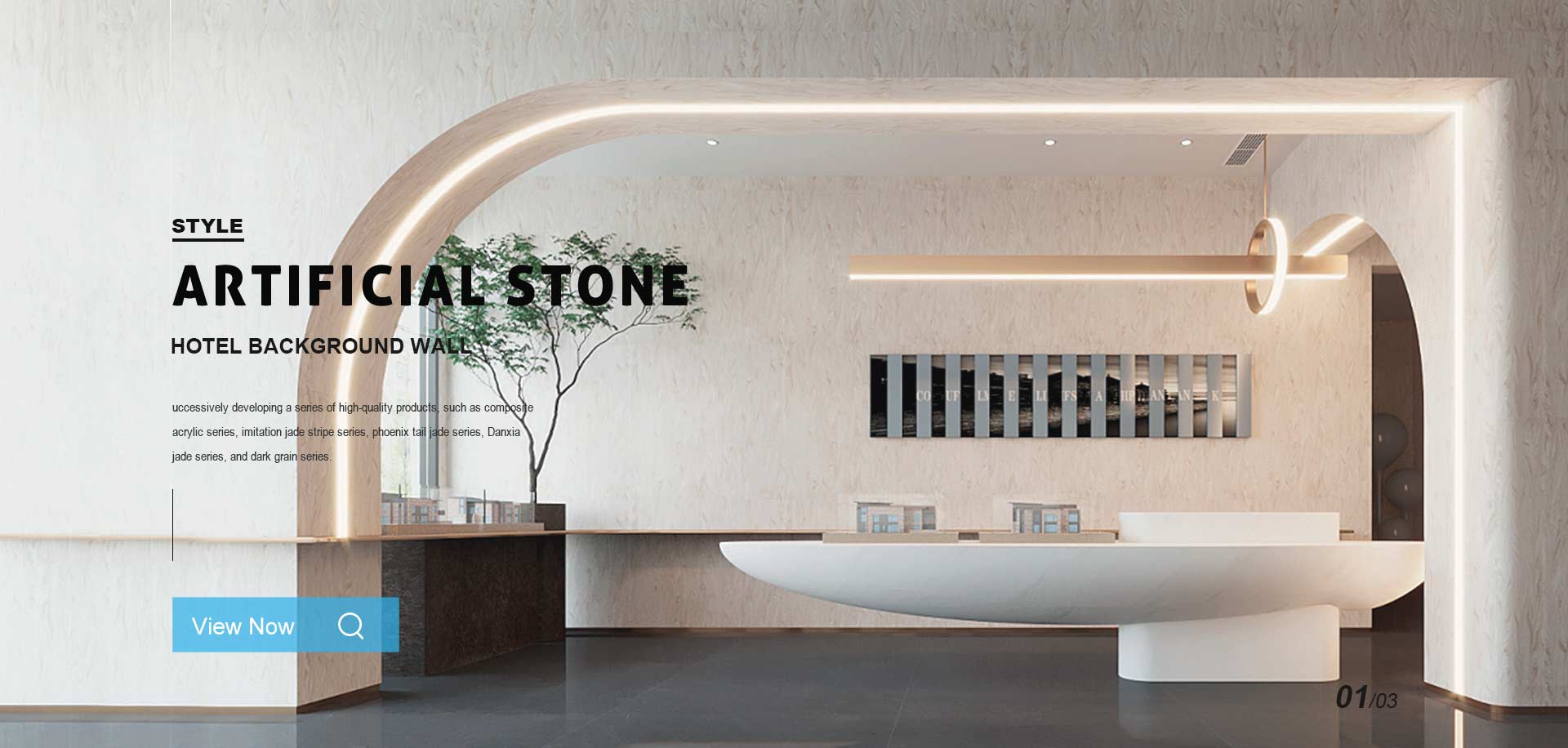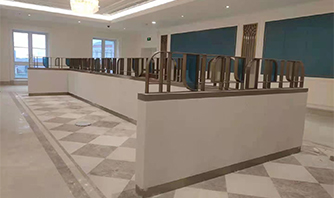
Artificial Stone Material is a synthetic decorative material. According to the different binders used, it can be divided into two types: organic Artificial Stone and inorganic artificial stone. According to the different production processes, it can be divided into four types: polyester Artificial Marble, composite artificial marble, silicate artificial marble, and sintered artificial marble.

Among the four decorative materials, organic (polyester type) is the most commonly used, and its physical and chemical properties are also the best.
Marble is a high-grade decorative material, so you must be careful when purchasing it to avoid wasting money. The appearance quality of marble can be identified from the following items.
(1) Determine the color tone of the pattern. Under the condition of sufficient light, place the selected slabs and the same batch of other marble slabs to be purchased on the ground at the same time, and stand 1.5m away from them for careful visual inspection. It is required that the patterns and tones of the same batch of marble plates should be basically coordinated.
(2) Check for surface defects. Like some Artificial Stone Desk, under the condition of sufficient light, the plate is placed flat on the ground, and the invisible defects are considered to be no defects when standing at a distance from the marble plate lin; Insignificant defects at sin are no obvious defects; The obvious defects at sin are considered to be defective. Defects to be observed specifically include warpage of the board; whether there are cracks, sand holes, heterochromatic spots, stains and depressions on the surface of the board. If it is judged that there are no above defects, the plate is a superior product, and at the same time, there must be no missing edges or corners on the front of the plate; if the above defects are not obvious and there are no obvious missing edges and corners, then this plate can be considered as a first-class If there are those defects but do not affect the use, and there is only one place on the front of the board, the length is not more than 8mm, the width is not more than 3mm, the missing edge or the length and width are not more than 3mm, then the board can be judged as a qualified product . If the board is damaged during transportation, loading and unloading, it can be bonded (for cracked boards) or repaired (for edge defects, surface pits or pits). However, after bonding and repairing, no obvious traces are allowed on the front, and the color should be close to the color of the front.
(3) View markup. The marking sequence of marble slabs is: naming, classification, specification size, grade, standard. The naming sequence of marble slabs is: the name of the place of origin of the block, the name of the characteristic color of the pattern, and marble (code-named M). Marble slabs are divided into two categories: ordinary slabs (code-named N): square or rectangular slabs; special-shaped slabs (code-named S): slabs of other shapes. There are three grades of marble slabs: excellent product (code-named A), first-class product (code-named B) and qualified product (code-named C). Classification is based on the allowable deviation of the specification and size of the board, the allowable limit tolerance of flatness, the allowable limit tolerance of angle, appearance quality and specular gloss.